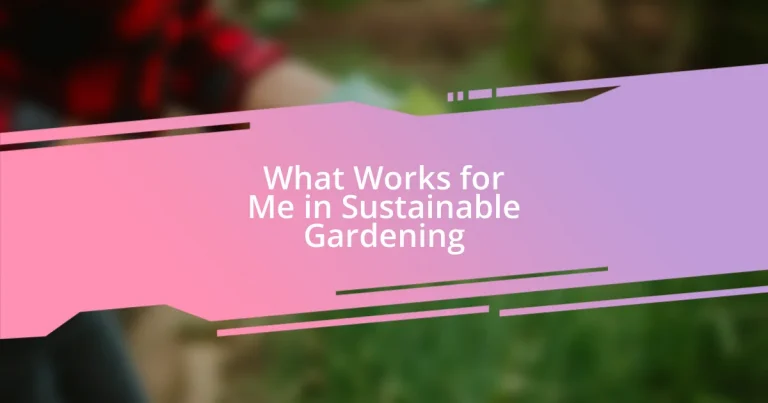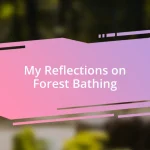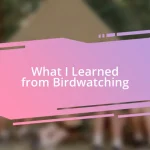Key takeaways:
- Sustainable gardening thrives on nurturing biodiversity by utilizing practices like companion planting, rainwater collection, and native plant selection to create a balanced ecosystem.
- Composting is vital for soil health, requiring a proper mix of greens and browns and regular aeration to produce rich, nutrient-dense compost.
- Natural pest management through beneficial insects and homemade remedies fosters a healthy garden environment while minimizing the need for chemical interventions.
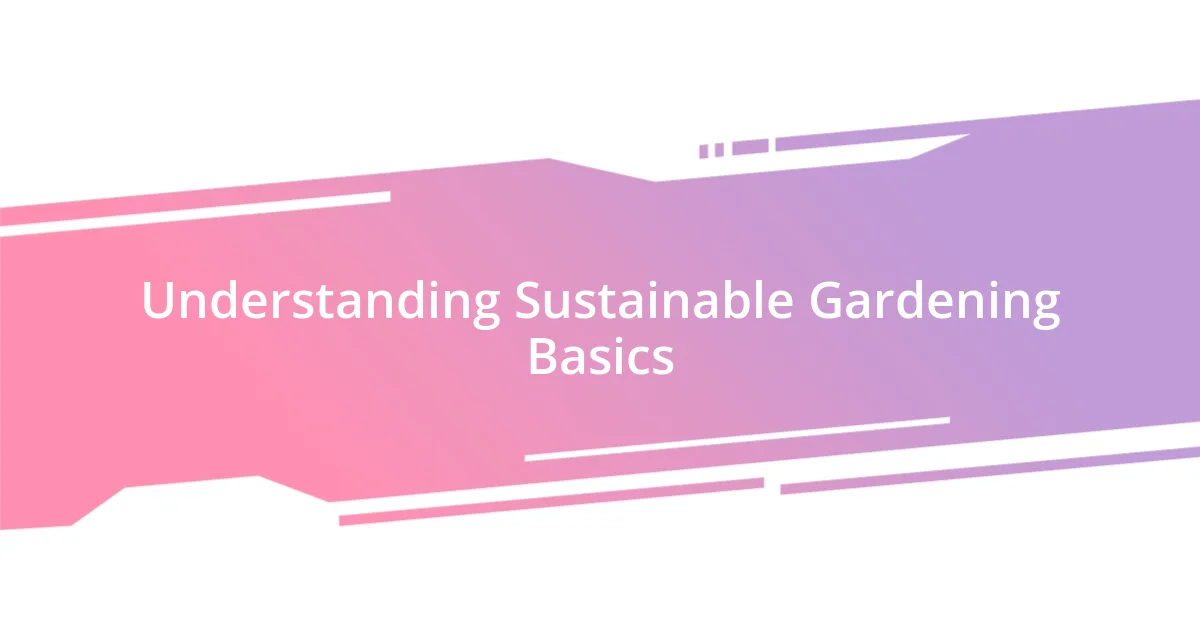
Understanding Sustainable Gardening Basics
Sustainable gardening starts with understanding the balance of ecosystems. For me, observing the diverse insects and plants in my garden has been a revelation. Have you ever noticed how a single bee or butterfly can transform the entire atmosphere? It’s like a mini-world thriving right in our backyards, and nurturing that biodiversity is crucial.
One fundamental principle I’ve found invaluable is soil health. I’ve spent time learning about composting, which not only reduces waste but also enriches my soil. The first time I saw my kitchen scraps turning into nutrient-rich compost, it kindled a sense of pride in me. It’s not just about growing plants; it’s about creating a living environment that supports them.
Water management is another essential aspect of sustainable gardening. I’ve adapted my watering routine to be more mindful, using rain barrels and drip irrigation. Have you tried collecting rainwater? It feels rewarding to know you’re using a natural resource efficiently, and my plants have thrived because of this thoughtful approach.
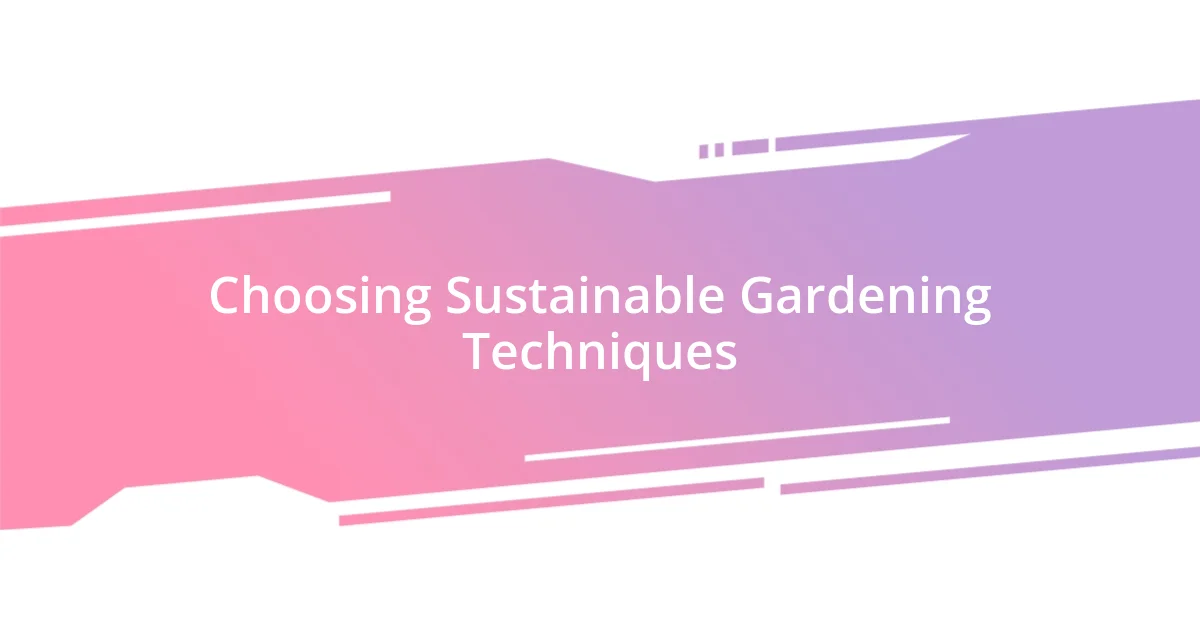
Choosing Sustainable Gardening Techniques
Choosing sustainable gardening techniques can feel like an overwhelming task, but I’ve realized it becomes easier when you align your choices with the conditions in your garden. For instance, I’ve discovered that native plants often flourish with minimal care. The first time I added a native wildflower bed, I was astonished at how much happier the local pollinators were. It’s not just about aesthetics; it’s about creating an ecosystem that thrives naturally.
When considering sustainable techniques, here are some that have worked for me:
- Companion Planting: I’ve paired herbs with vegetables, which not only maximizes space but also enhances growth and deters pests.
- Mulching: I love using organic mulch to keep moisture in the soil and suppress weeds. It’s like giving my plants a cozy blanket!
- Natural Pest Control: Introducing beneficial insects like ladybugs has transformed my pest management game. It’s surprisingly satisfying to watch nature’s balance unfold.
- Crop Rotation: Each season, I shift where I plant my crops. I once didn’t believe it would make a difference, but I’ve seen significant improvements in my soil health ever since I started.
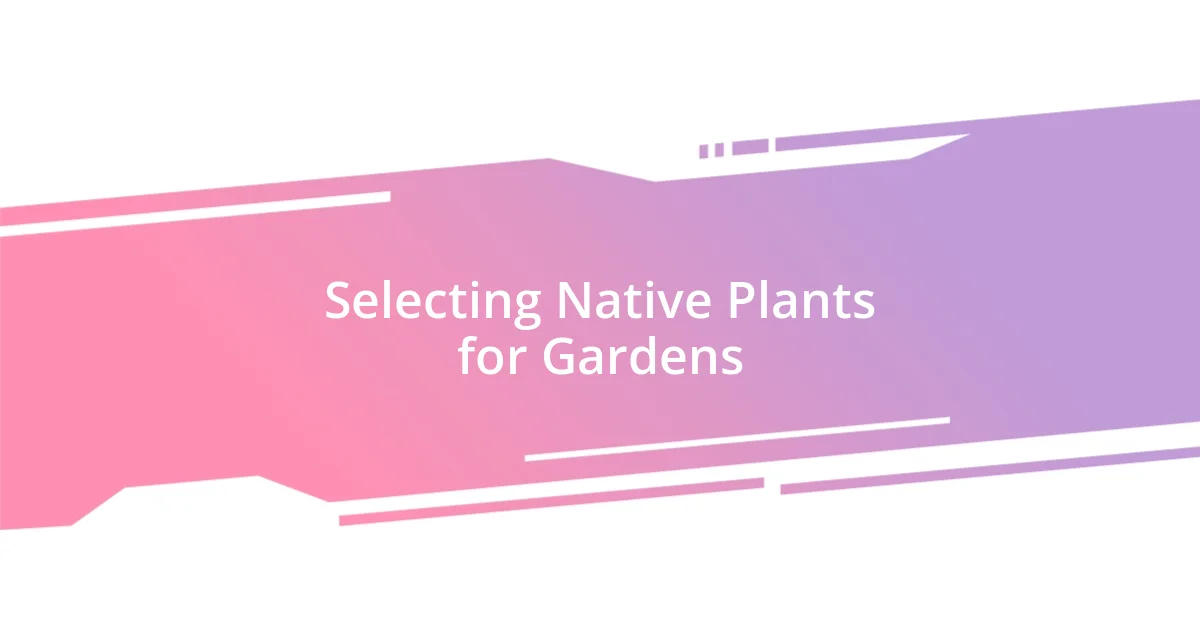
Selecting Native Plants for Gardens
Selecting native plants for your garden can be one of the most rewarding aspects of sustainable gardening. When I first introduced local species into my landscape, I noticed a unique transformation—not just in the plants but in the entire ecosystem around my yard. These plants thrive in their natural habitat, requiring less water and maintenance, which is a significant win for anyone looking to create a sustainable garden. Isn’t it fascinating how they effortlessly blend into the environment?
I’ve learned that selecting the right native plants can also attract birds, butterflies, and other beneficial wildlife. I vividly remember the day I spotted a bluebird perched on a native dogwood tree I had planted. That moment filled me with joy and reaffirmed my choice to go native. It’s incredible how these plants can create a sense of place and connection to the local environment. It makes me wonder—how often do we think about the wildlife that could flourish if we chose plants that belong to our region?
To make the most of your efforts, start by researching native plants suited to your specific area. This can involve visits to local botanical gardens or simply browsing online native plant databases. I’ve found that asking local gardeners for suggestions can yield fantastic options. After all, local knowledge has a way of uncovering hidden gems that might not be widely known.
| Native Plant | Benefits |
|---|---|
| Eastern Redbud | Attracts pollinators and provides beautiful spring blooms. |
| Milkweed | Essential for Monarch butterflies; supports a variety of pollinators. |
| Black-eyed Susan | Low maintenance and drought resistant, thriving in poor soil conditions. |
| Switchgrass | A great erosion preventer and provides habitat for wildlife. |
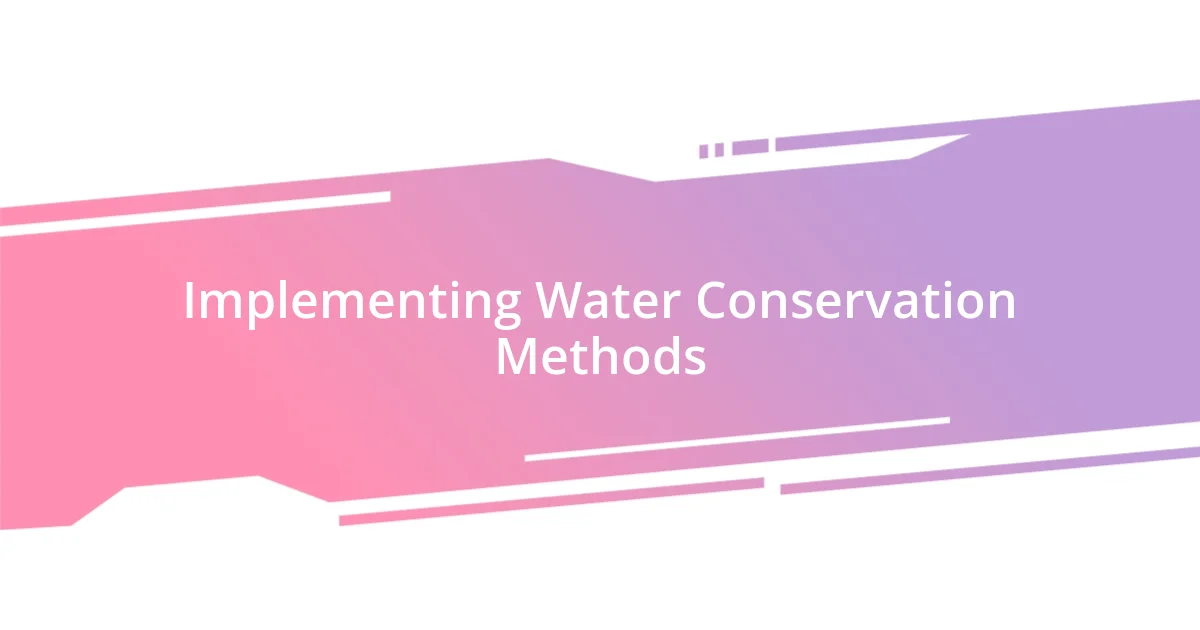
Implementing Water Conservation Methods
Implementing water conservation methods in the garden is where I’ve found real peace of mind. One effective approach I’ve embraced is drip irrigation; it’s like giving each plant a drink exactly when it needs it, minimizing waste. I remember the time I set it up—it felt like crafting an intricate web of support for my plants, and the results were remarkable. My garden seemed happier and healthier, all while using significantly less water.
Rain barrels have also become a cherished part of my gardening routine. Collecting rainwater not only saves me money on my water bill, but it also feels incredibly rewarding to utilize nature’s resource. Standing outside during a gentle rain, I can’t help but feel a sense of connection to the environment, knowing that the water collected will nurture my plants in the dry days ahead. Have you ever thought about how much water falls on your roof?
Lastly, I employ a technique called xeriscaping, primarily with drought-tolerant plants. This method has transformed my yard into a vibrant oasis, requiring minimal watering. I’ll never forget the joy of watching my succulents thrive in the summer heat— they flourish with so little input from me. This experience has led me to ponder: how can we rethink the idea of beauty in our gardens by choosing plants that naturally need less water?
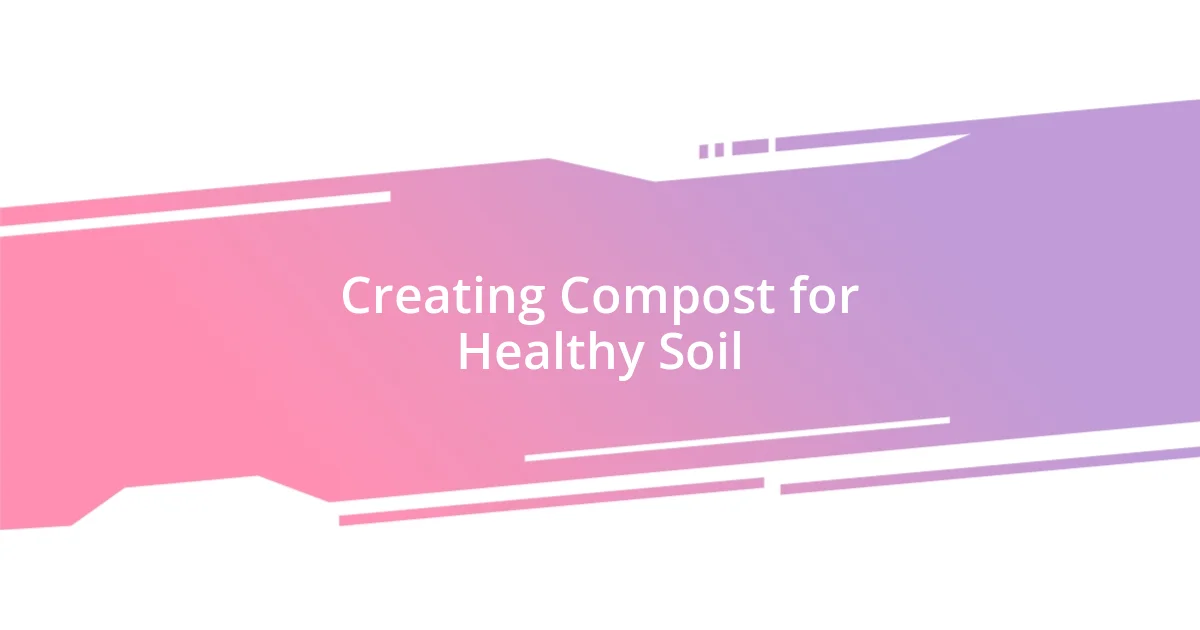
Creating Compost for Healthy Soil
Creating compost is one of the cornerstones of nurturing healthy soil in my garden. I remember my first attempt at composting—tossing vegetable scraps and garden waste into a bin felt like a small act that held the potential for great transformation. Watching that pile evolve into rich, dark compost was like witnessing magic in slow motion; it reminded me that every little effort has a significant impact.
To get started with composting, I understood the balance between ‘greens’ (like kitchen scraps) and ‘browns’ (such as dried leaves and cardboard). This mix is essential for speeding up the composting process while enriching the soil. I’ve often toyed with different ratios, discovering that a 1:2 ratio between greens and browns creates the perfect decomposing environment. Have you ever dived deep into composting ratios? It’s surprisingly fun to experiment!
Another key takeaway for me was the importance of aeration in composting. Turning the pile every few weeks keeps the process active and prevents unpleasant odors. I vividly remember the earthy scent wafting from my compost bin after a good turn—the smell of nature at work. Isn’t it satisfying to create your own nutrient-rich fertilizer and contribute to a healthier garden ecosystem? I often find myself reflecting on how these small contributions are like whispers of sustainability in our busy lives.
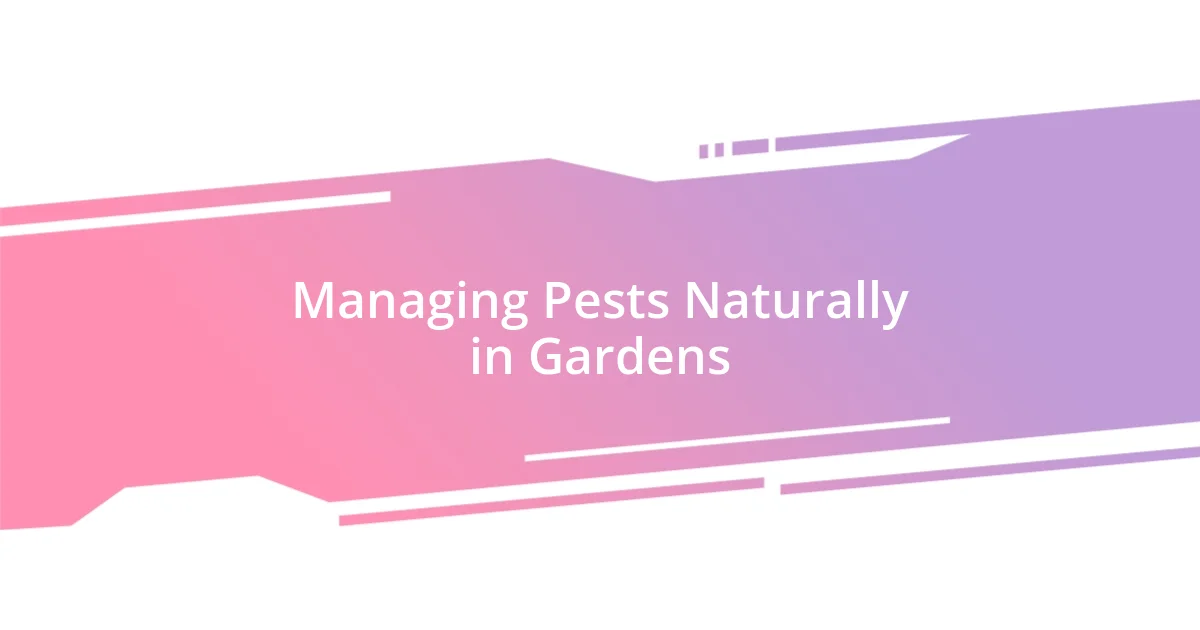
Managing Pests Naturally in Gardens
Managing pests naturally in my garden has been a transformative experience. Initially, I was overwhelmed by the idea of pests wreaking havoc on my hard work, but then I discovered the power of companion planting. For example, I remember planting marigolds alongside my tomatoes. The vibrant flowers not only brightened the garden but also deterred pests like aphids. Isn’t it amazing how nature provides us with allies in our fight for a healthy garden?
I also turned to homemade remedies, particularly using a simple soap spray. On one occasion, my leafy greens were under attack by aphids. Instead of reaching for harsh chemicals, I mixed a few drops of dish soap with water and sprayed it on the infested areas. The thrill of witnessing those pests vanish almost instantly made me realize that sometimes, the simplest solutions yield the best outcomes. Have you ever tried creating your own pest control products? It can be both satisfying and effective!
Finally, I embraced the importance of beneficial insects, like ladybugs and lacewings. One summer evening, I noticed a ladybug crawling on my cucumber plant, and it struck me how inviting these creatures into my garden felt like welcoming friends. I’ve since learned that by planting diverse flowers and avoiding pesticides, I can create a habitat that encourages these helpful insects. Isn’t it a beautiful thought that fostering a balanced ecosystem can protect our plants while enhancing their beauty?
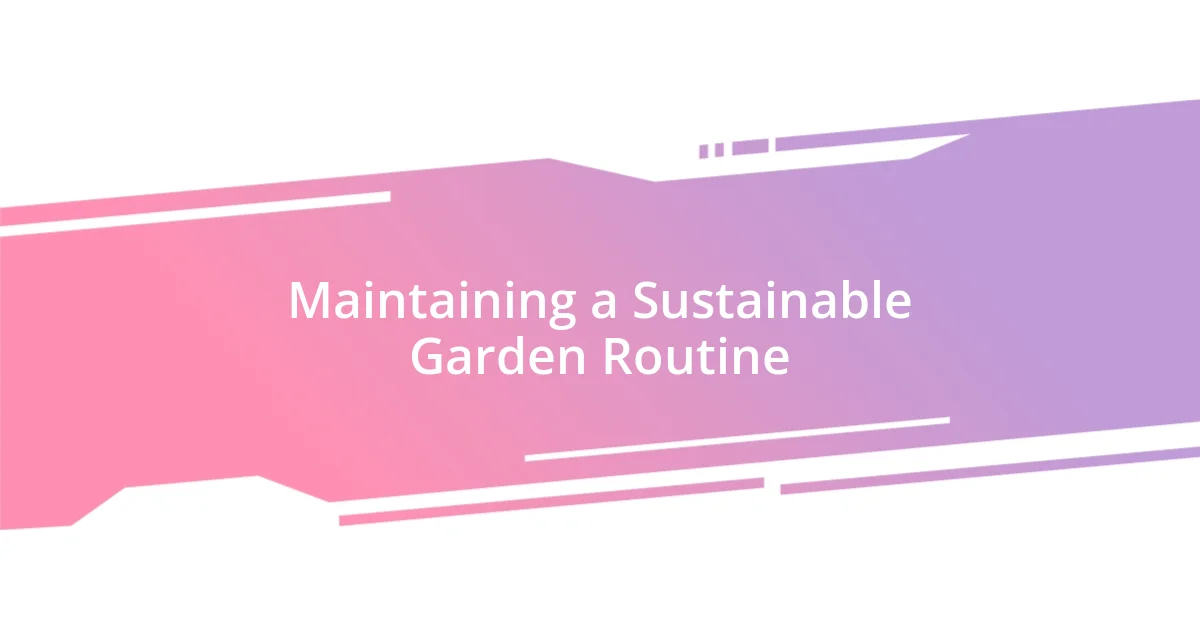
Maintaining a Sustainable Garden Routine
Maintaining a sustainable garden routine is all about consistency and connection. I remember the first time I set a specific day each week to check on my plants. It became almost meditative, allowing me to connect with the garden’s rhythms while observing subtle changes over time. Have you ever found peace in this repetition? For me, it turned simple maintenance into a ritual—one that reminded me that our gardens thrive on attention and care.
Watering wisely has also become a cornerstone of my sustainable routine. I made the switch to early morning watering after I realized how much less water evaporated during those cooler hours. The subtle sound of water soaking into the soil was like music to my ears, and I reveled in knowing I was being more efficient. Plus, who doesn’t enjoy spotting frogs and birds that thrive in a well-hydrated landscape? It makes me wonder—how can we maximize our resources while creating habitats for local wildlife?
Lastly, keeping records has been a game-changer in maintaining my garden. At first, I thought it sounded tedious, but jotting down what I plant each season and any observations about weather patterns and plant growth has given me valuable insights. I often refer back and notice trends that help me plan better for the following year. It’s fulfilling to look back on my notes and see how my understanding has grown—almost like watching a child develop. Have you ever traced your gardening journey? It’s a wonderful way to celebrate not just progress but also those little learning moments that make gardening so rewarding.












